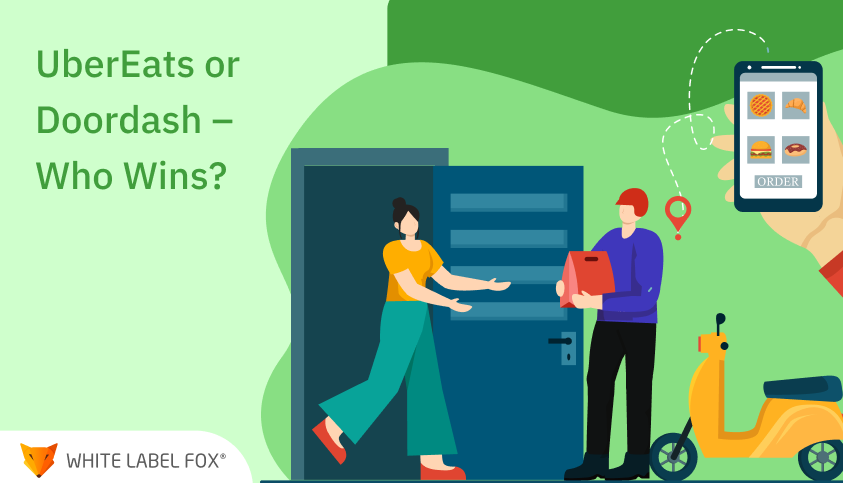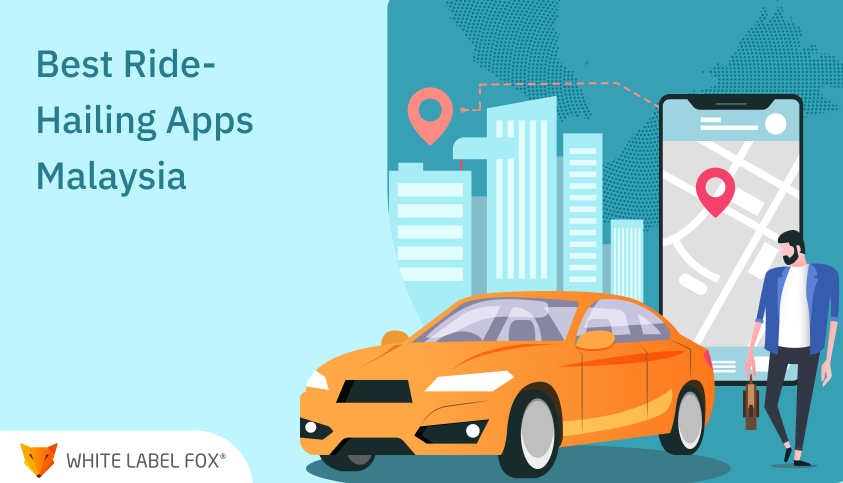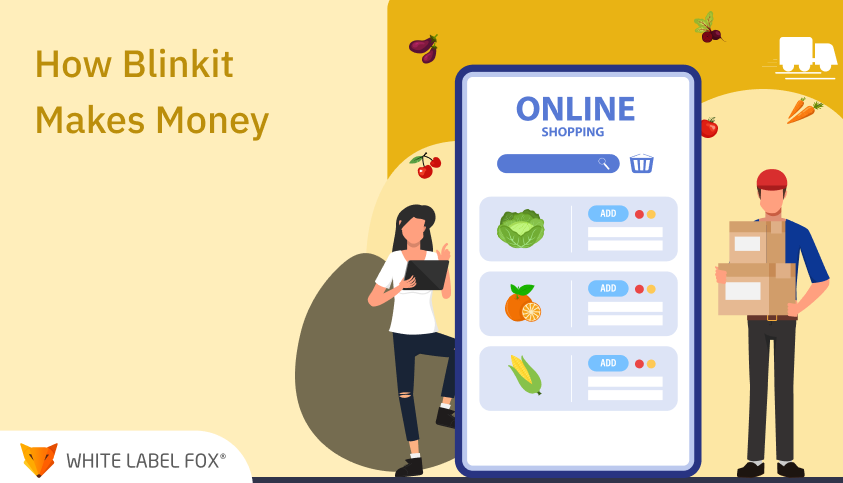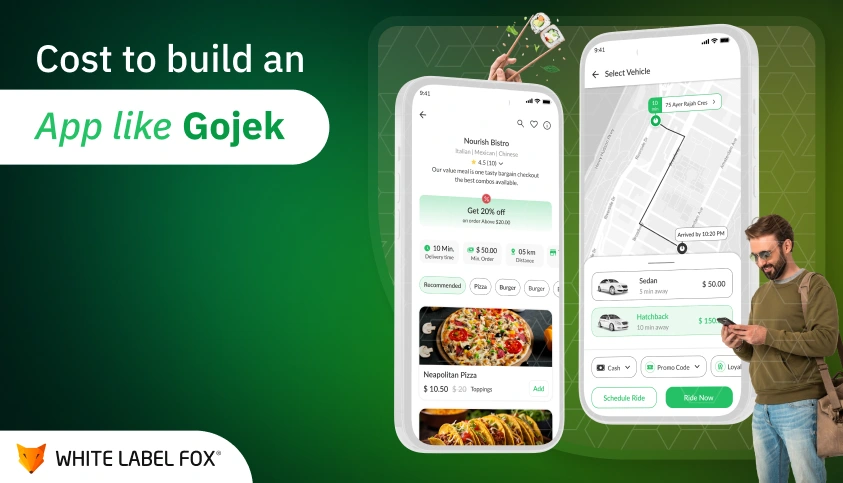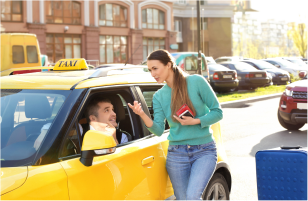The US food delivery market has grown tremendously, surpassing the $26.5 billion predicted by Statista by 2023. However, location also plays a critical role in their success since these two rival food delivery apps combined (UberEats and Doordash) hold more than 60% of the market.
These apps have turned the marketplace upside down, allowing customers to access their favourite meals conveniently with a mix of varieties and offering them reliable home delivery options
In this blog, we thoroughly compare UberEats vs. Doordash, filtering the essence of delivery fees, quality of service, ease of the app interface, and customer experience. Through data analysis from verified sources, such as Edison Trends, we aim to dissect the fortresses and vulnerabilities of each platform, helping our readers to make an informed decision about their food delivery preferences.
Besides considering the costs and service quality both platforms provide, we’ll also study the variety of restaurants available on UberEats and Doordash and the entire consumers’ experience from ordering to delivery. Through analyzing these elements thoroughly, we aim to provide all readers with a complete picture of the advantages and drawbacks of each platform, which will eventually help them make a correct decision based on the criteria critical for everyone personally.
Keep reading, and you will learn who wins at the end of the blog: Uber Eats or DoorDash. Shall we begin?
What is UberEats?
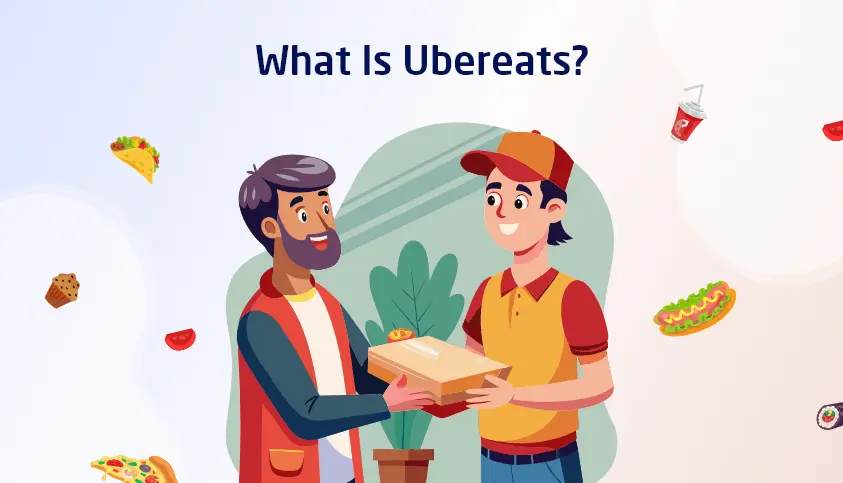
Uber Eats is a part of Uber Technologies Inc. (a parent company), which operates in the global ride-hailing and transportation industry. It was founded in 2009 and came into existence in 2014. With Uber’s establishment as a service, it moved from a taxi-hailing platform to an American multinational ride-sharing company with a tremendous technological infrastructure.
The platform runs as an on-demand food delivery service, allowing users to order food from various restaurants and deliver it to their door.
Uber Eats operates in over 6,000 cities and over 45 countries worldwide. It boasts one of the most extensive food delivery networks in the world. The company has a mobile app that makes ordering a breeze. With it, customers can choose their meals, track each delivery, and enjoy their meals in their homes as fast as possible.
What is Doordash?
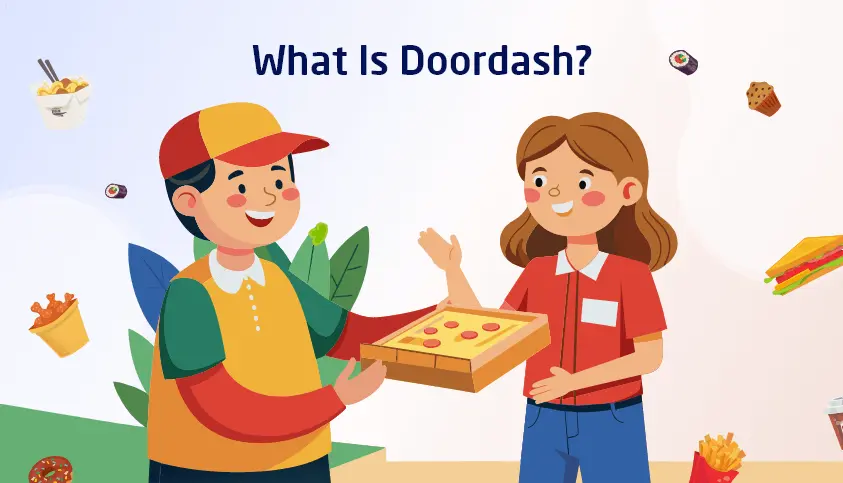
DoorDash is an online food delivery app generally known as the eminent platform that provides between users and restaurants delivering the food or making it available for pickup. In 2013, Doordash had its first year in business with the founding members Tony Xu, Stanley Tang, Andy Fang, and Evan Moore. Now, it is one of the most recognized players in the food delivery industry.
The platform operates in more than 4000 United States, Canadian, and Australia cities. It offers foodies a wide variety of cuisines from local restaurants. DoorDash’s mobile app and website are easy to use, allowing customers to view restaurants’ menus, place orders, follow delivery status, and make real-time payments.
DoorDash has its spot among all other delivery services by providing different delivery options such as standard delivery, DashPass (subscription plan for free delivery), and DashMart (online store for grocery and household essentials).
Supercharge Your Food Delivery Business With End-To-End Solution
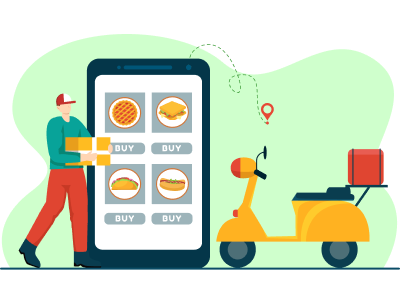
A Sneak Peek into UberEats Business Model
UberEats is grateful for an elaborate business model that makes integrating customers, restaurants (partners), and drivers (delivery people) effortless, thus developing a robust system for food delivery.
Let’s take a closer look at UberEats’ workflow, stakeholders, and revenue streams:
Workflow
Customers: UberEats users access the UberEats platform through the mobile app or web. Among them, they will come across various restaurants, look through menus, make orders, follow the delivery in real-time, and leave their suggestions through reviews and ratings.
Restaurants (Partners): Restaurants sign up with Uber Eats to increase their customer base and provide an additional delivery service. The restaurant owner uploads the menu to the platform, receives incoming orders through the UberEats dashboard, then cooks meals and gives them to delivery partners who deliver on time.
Delivery Partners (Drivers): Delivery providers are the backbone of UberEat’s business model and facilitate delivery. They receive delivery orders, get to restaurants for pickup orders, and wait for customers to retrieve their orders from the locations where they come. The app comes with navigation tools and real-time updates that assist delivery.
Revenue Streams
UberEats generates revenue through several channels:
- Delivery Fees: Customers are billed delivery fees per order, a significant part of UberEats’ revenue.
- Service Fees: The restaurants essentially pay UberEats service fees for their delivery infrastructure, order management tools, and marketing services.
- Promotional Partnerships: UberEats offers different marketing channels, including restaurants for promotional campaigns, sponsored listings, featured menus, and exclusive offers. Such partnerships additionally bring in revenues from advertising and commissions.
UberEats’ business model thrives on creating value for all stakeholders while leveraging multiple revenue streams to sustain and grow its food delivery ecosystem.
A Glimpse into Doordash Business Model
This is the part where we examine the business models of DoorDash and UberEats and offer a comparative analysis to show what each one is and what its competitive edge is. This exploration will demonstrate that these two food delivery apps suit your desires and needs.
- Commission-Based Revenue: DoorDash, however, mainly gets revenue through restaurant commissions on a single order. Restaurants pay a given percentage of the order value to DoorDash as a commission for executing delivery orders through the DoorDash platform.
- Delivery Fees: DoorDash charges clients’ delivery charges per order and takes over commission fees. These fees may differ depending on the number of miles, the availability of a place, and the cooperation of a restaurant.
- DashPass Subscription: For those who use DoorDash frequently, the company offers a feature called DashPass. Customers pay a monthly fee for free delivery on eligible orders. This subscription model helps DoorDash repeat its income throughout the year.
- Partnerships and Advertising: DoorDash collaborates with restaurants to create promotions and advertisements for its online ordering platform. Through this approach, restaurants pay DoorDash for their marketing activity, which increases their overall revenue.
Let’s Compare Both Business Model
- DoorDash and UberEats generate revenue through commissions based on restaurants and fees charged on customer orders.
- While Doordash uses DashPass and Uber Eats uses UberEats Pass, both require a subscription plan to enjoy the benefits.
- Both platforms generate revenues through partnerships, ads, and data utilization and offer a wide range of added services and value.
- DoorDash has gained a reputation for servicing small towns and suburbs. At the same time, UberEats tends to be more dominant in the cities because of Uber’s extensive current infrastructure.
- DoorDash’s market share in the US seems bigger (66%) than UberEats, although the latter has a broader geographical coverage than Uber.
Whether you’ve got DoorDash or UberEats at the end of the day will be determined by local accessibility, restaurant partners, pricing, and quick service/delivery quality.
UberEats vs. Doordash From Driver’s Point of View
Drivers are the core of every successful delivery company, establishing a solid relationship between restaurants and customers. This part provides a detailed analysis of drivers’ experiences with both UberEats and DoorDash.
It includes salient factors like the pay system, the excellent win-win registration process, the flexibility in time and base fees, and tips. Capturing these elements from a driver’s point of view will trigger the light bulb in knowing how these platforms determine a driver’s earning capabilities and their overall encounter with these major food delivery giants.
UberEats
- Earnings: UberEats drivers (labelled as delivery partners) earn through various factors like distance, time, and promotions. The pay structure includes a base fare, a per-mile/kilometre fee, a fee for each minute of wait time at the restaurant, and a higher payment for surge pricing.
- Registration Process: Driving for UberEats demands that drivers fulfil criteria such as age, vehicle type, insurance and a valid driver’s license. Account creation, where documents are submitted, undergoing thorough background checks, and completing the training modules, follows the registration process.
- Pay Scale: UberEats driver pay is typically not constant but varies depending on time, location, and food delivery volume. The drivers may decide to work as many or as few hours as they like, and their availability is not dependent on any set schedule.
- Base Fees: Generally, UberEats clients have to pay some base delivery fee, depending on particular cases like the distance and the state of the local market. Moreover, tipping to drivers is a type of earnings addition.
- Tip Amount: Customers providing tips can make driving with UberEats much more profitable for drivers. The customer can tip during the check-out process or after the delivery of the goods, and the driver will automatically receive the tip.
DoorDash
- Earnings: Doordashers, as they are called, earn their money in the same way as UberEats drivers: basic pay, commission for each delivery, mileage pay, and sometimes bonuses or other extra incentives. Customers will also give dashers tips.
- Registration Process: To become a Doordash driver, you must meet the age limit, vehicle requirements, and insurance requirements and pass a background check. Registration is a three-stage process: first, you must create a Dasher account, upload the required documents, and complete orientation.
- Pay Scale: With DoorDash, drivers are familiar with the guaranteed minimum payment per delivery, which they can view before they begin the delivery process. Fleetwork drivers can either work specific shifts or opt for a shift on-demand, which allows them to earn flexibly.
- Base Fees: There is a base fee on all DoorDash deliveries. This fee is affected by other factors, such as the delivery location and the order size. Customers also have an option to tip the Dashers, regardless of how much they earn.
UberEats vs. Doordash: Comparison Table (Which is Better Doordash or UberEats)
The table below compares UberEats and DoorDash’s main dissimilarities and similarities from the drivers’ point of view, helping readers understand the finer nuances of each platform.
| Particulars | UberEats | Doordash |
|---|---|---|
| Earning Structure | Base fare + distance/time + potential surge pricing | Base pay + pay per delivery/mile + bonuses/incentives |
| Age | < 19 years old | < 18 years old |
| Registration Process | Requires driver’s license, vehicle type, insurance, background check | Similar requirements, orientation process |
| Pay Scale | Variable earnings, influenced by factors like location and demand | Guaranteed minimum earnings visible before accepting orders |
| Flexibility | Flexible scheduling, work as much or as little as desired | Schedule shifts or work on-demand, flexibility in earning opportunities |
| Base Delivery Fees | Varies based on location and market conditions | Varies based on location and order size |
| Tip Amount | Directly impacts driver earnings, given by customers | Directly impacts earnings given by customers |
| Customer Base | Broad reach, international presence | Focus on suburban and smaller markets |
| Overall Popularity | Global presence, widely recognized | Strong market share in the United States |
UberEats vs. Doordash From Customer’s Point of View
Customers are the principal actors of food-ordering apps, stimulating the task and molding the consumer’s experience. In this part, we’ll look at the features that UberEats and DoorDash offer clients, such as user-friendly interfaces, foodie choices, delivery charges, and overall convenience.
By analyzing these factors, we tend to provide an overview of which platform presents the best product experience for the customer.
User-Friendly Interface
- UberEats: Since the UberEats interface is user-friendly and easy to use, users have effortless browsing and ordering options.
- DoorDash: In addition, DoorDash provides users with a very user-friendly interface, has very good navigation tools, and is visually appealing.
Restaurant Selection
- UberEats: UberEats brings together a variety of possible dining outlets of established restaurants within one platform so that users get an extensive choice of cuisines.
- DoorDash: In addition, DoorDash has a really large selection of restaurants, including locally famous ones and those of well-known chain brands.
Delivery Fees
- UberEats: UberEats fees are distance-based, sometimes time-based, and can be influenced by surcharges or promotions. People can also subscribe to an UberEats Pass for discounted fees, which allows them to enjoy the benefits at a lower cost.
- DoorDash: DoorDash determines the delivery fees, considering aspects such as distance and order size. Customers, on the other hand, can also choose DashPass, which provides reduced payments and free delivery for eligible orders.
| Aspect | UberEats | Doordash |
|---|---|---|
| Interface | Easy navigation | User-friendly design |
| Restaurant Choice | 890,000 merchants | 550,000 +restaurants partners |
| Delivery Fees | Based on distance | Charges based on order size |
| Subscription Option | Offers pass for free delivery | Also offers the same |
| Promotional Offers | Regular discounts offers | Deals and offers from partner restaurants |
This comparison table highlights the key factors customers consider when choosing between UberEats and DoorDash, providing a comprehensive view of the user experience on both platforms.
Closing the Battle: UberEats vs. Doordash
| Aspect | UberEats | Doordash |
|---|---|---|
| Founded In | 2014 | 2013 |
| Number of Users | More than 20 million | Over 18 million |
| Market Share | Around 25% | Around 65% |
| App Store Rating | 4.6 (iOS), 4.4 (Android) | 4.7 (iOS), 4.5 (Android) |
| Support | Dedicated customer support | 24/7 customer service |
| Area Served | Available in 6, 000 cities globally | Available in more than 7000 cities worldwide |
Now that the pros and cons of the two delivery services have been discussed, it’s time to draw a line between UberEats and DoorDash.
Which is Better Doordash or Ubereats?
Each platform has its own set of unique features and perks, and it is committed to satisfying different users’ requirements.
- If you prefer many restaurant selections and an easy-to-use app, UberEats can answer your cravings.
- However, if you are considering minimal work and transparent pay structures, DoorDash would be the better option.
For startups considering entering the on-demand food delivery market, it is essential to work with a reputable on-demand app development company specializing in on-demand solutions. These companies can build a comprehensive system to your business specifications, possibly including those that track payments in real-time, have secure payment gateways, and provide a delightful user interface, among other things.
The food delivery market is undergoing the highest growth ever, with a significant increase in customers seeking fast and trustworthy delivery services. If you are interested in jumping into this exciting sector, now is an ideal moment to take advantage of the available chances to become a success.
Whether you have a vital idea or need advice in launching a food delivery platform, our expert team will help you. From coming up with ideas to their realization, we provide complete and all-inclusive services that are individualized for business requirements. Contact us today to transform your food delivery idea into a successful business.
Frequently Ask Questions
UberEats is an online food delivery service that allows customers to
order food from local restaurants and have it delivered to their
doorstep. It operates through a mobile app and website, partnering with
restaurants to offer a wide range of food options.
UberEats is available in over 6,000 cities across 45 countries,
benefiting from the extensive global reach of its parent company, Uber.
On the other hand, DoorDash operates primarily in the United States and
Canada, covering over 4,000 cities.
UberEats partners with over 600,000 restaurants worldwide. DoorDash,
however, partners with a similarly extensive network, reaching around
500,000 restaurants in North America. While UberEats may have a larger
global reach, DoorDash has a stronghold in the U.S. market.
In general, both UberEats and DoorDash provide fast delivery, but their
speed can vary depending on location, time of day, and restaurant
proximity. However, DoorDash is often considered to have slightly
quicker delivery in urban areas due to its dense network of drivers and
optimized logistics.
Delivery fees vary based on location and order size for both platforms.
On average, DoorDash offers delivery fees starting at $1.99, whereas
UberEats has similar fees starting around $2.00. However, the final cost
can differ based on promotions, distance, and restaurant participation.
Both platforms offer subscription services to provide users with perks:
- UberEats offers Eats Pass, which provides free delivery
and discounts for a monthly fee.
- DoorDash offers DashPass, which provides free delivery on
eligible orders for a monthly or annual fee.
Both services can save frequent users money on delivery fees and offer
other benefits like reduced service fees.
- UberEats offers Eats Pass, which provides free delivery and discounts for a monthly fee.
- DoorDash offers DashPass, which provides free delivery on eligible orders for a monthly or annual fee.

